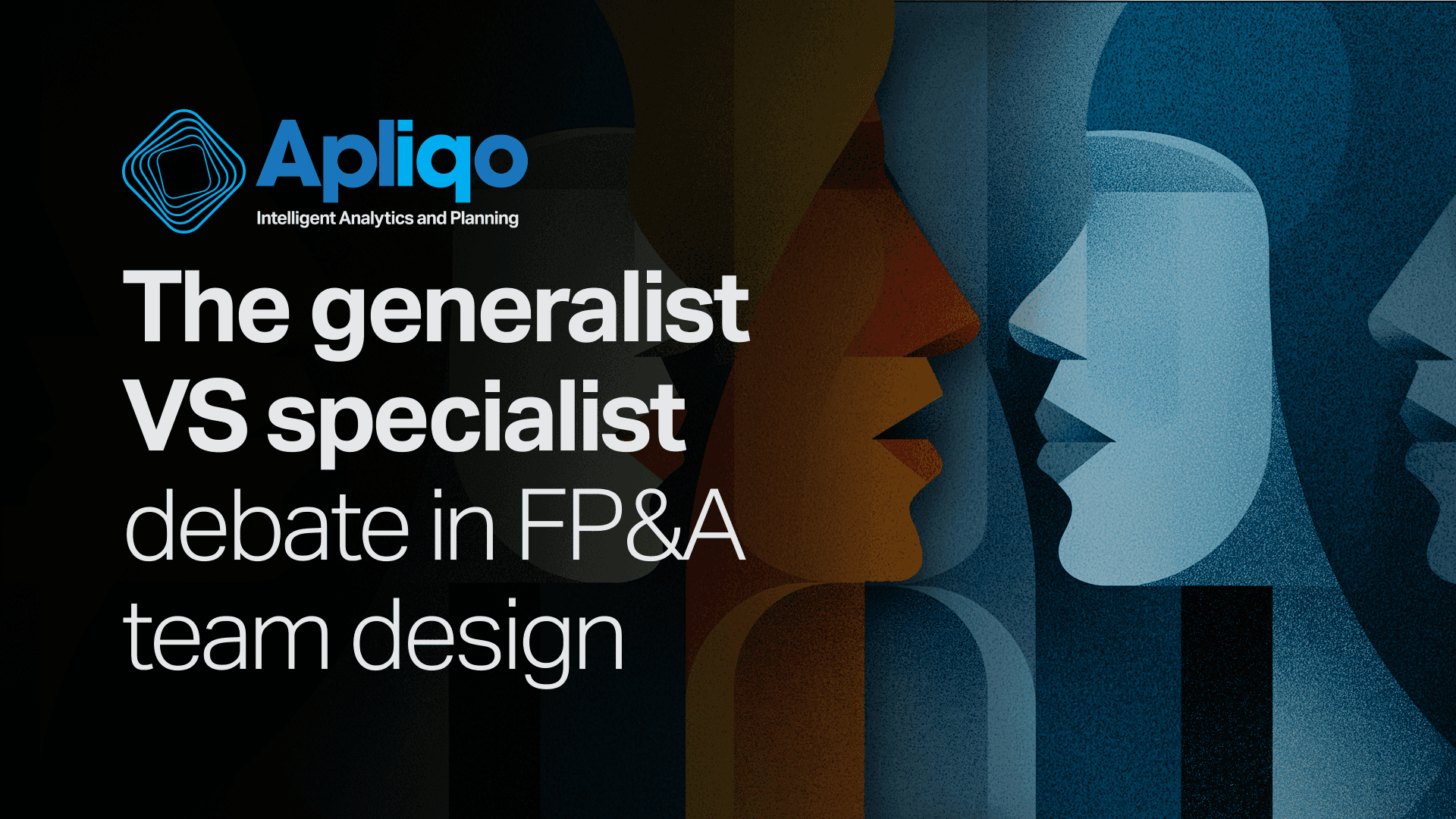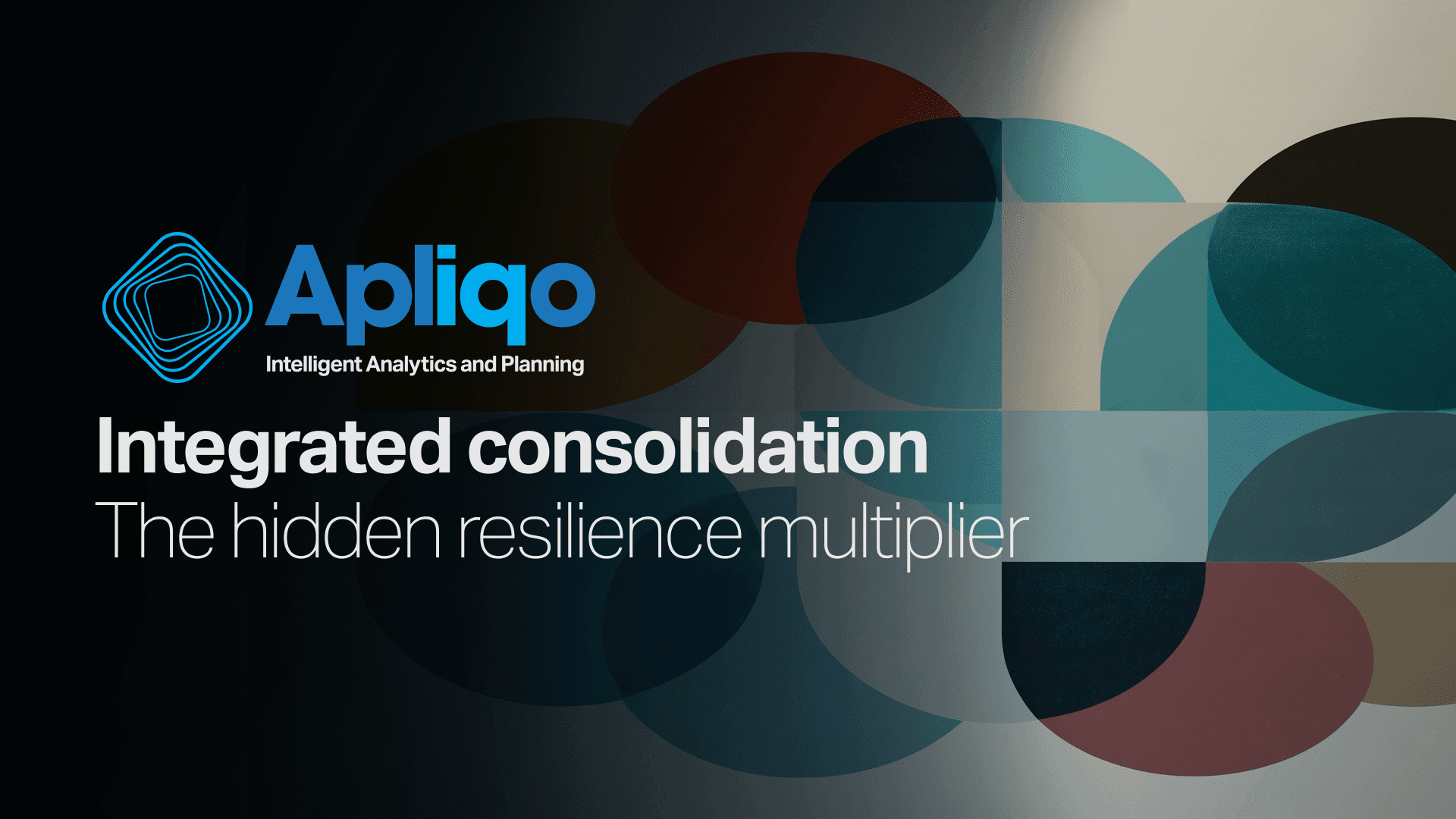Apliqo Insights: Melbourne FP&A Board meeting
Discover insights from the Apliqo FP&A Board meeting in Melbourne on "FP&A Analytical Transformation." Learn about key challenges, the importance of agility and real-time analytics, and trends like zero-based budgeting and AI's role in improving FP&A processes.
Aug 23, 2018
//
5
min read
Subscribe to Apliqo Insights
Apliqo is proud to be sponsoring such a high-quality forum where the most important challenges of FP&A related to people, process, technology, analytics and business partnering are debated.
A big thanks goes to Larysa for creating such a unique community focused on FP&A and the opportunity for Apliqo to be associated with it.
We would like to share some of the insights from the event in short summarized form. The topic of this board was “FP&A Analytical Transformation”.
A short survey was done to understand the maturity in FP&A in Melbourne – here are the results, which are very similar to the results in Sydney:
How long is the average duration of your budgeting and planning process in months?
1 – 3 months: 50.0 %
4 – 6 months: 39.3 %
More than 6 months: 10.7 %
How long is the average duration of your forecasting process?
Less than 3 days: 17.9 %
3 – 7 days: 28.6 %
More than 7 days: 53.5 %
The event continued with a short discussion (by table) on what the biggest analytical challenge in FP&A is. Below points provide a list of topics that were presented by the attendees (unweighted):
Accessing data from different systems and being able to manage quality is a major challenge
Too much data is making it hard to understand what is valuable and what not, while being able to use technology to use vaster data sources and volumes to understand key business drivers
Being able to create sensible customer and product profitability analysis
Integration between several systems and being able to consolidate the data, also faced with the challenge to connect old and new systems
Complexity of system environment and how to get it all together
Ability to build a costing model with proper allocations
Increase agility, speed and consistency of FP&A processes and output
Driving standardization, consistency and best-practices within international organizations
Trying to simplify FP&A processes without dumbing down models and being able to focus on what matters and is material
Skills in FP&A are moving from classical accounting towards analytics and business partnering
The audience was asked what the top trends in FP&A were. Answers in summary:
The need for more agility
Real-time dashboards, visualization and self-service analytics
Having not just the tools, but the right people
It is all about insight, not just the data or the reports
Common threads, “flexible, dynamic, automatic, responsive, visual”
“Not just about planning, but finding the right drivers”
Zero-based budgeting has resurrected again and is seen as a new way to drive better performance
Seven people in audience had already started exploring Artificial Intelligence (AI) and Machine Learning (ML) as potential solution to drive efficiency in FP&A processes. We are keen to learn more about the outcomes of these initiatives next year!
Additionally to the FP&A Board maturity model definition of “Leading State” the audience added a few points as critical to achieve it, being:
Not running planning process on the basis of pure aspirational targets (which are set top-down by management and are used to drive compensation models) but to base it on realistic targets driven by data, insights and facts
This would allow organizations to abandum the budget process and move into a more forward looking, agile forecasting process led by internal and external factors
Drive collaboration cross-functionally allowing for better alignment and buy-in into commonly agreed plans that are shared transparently throughout the organization
Shaun Gatter – Head of FP&A at GM Holden (Australia and NZ) – followed with his presentation on “Global FP&A transformation across General Motors”, where he presented the journey his organization is going through. GM Holden has set itself the goal to have an FP&A process that is:
Faster
Accurate
Less variance explanations and reconciliation
Less manual work
Enhance business’ analytical capabilities
Focusing on streamlining “CPR” – Close & Consolidation, Planning, Reporting
Aligning all processes and systems with best-practices
Subsequently the audience was split into four smaller groups to discuss the different aspects of analytical transformation.
Group session workshops
Below are the key points of the group findings on FP&A analytical transformation for people, process, technology, analytics and business partnering:
People
A new skillset is required in the new world of FP&A (more analytical, less accounting)
You can’t just turn accountants into FP&A professionals
FP&A people need a “sense of curiosity” – this is an important skill
It is more about attitude, curiosity and approach to analytics than it is about qualifications
Take leadership on a journey
Process
Control ownership
Put a governance and control framework in place to guarantee quality and consistency
Understand business requirements and put them in place
Understand tools and technologies in order to understand what can and can't be done
Understand drivers and build a model that connects them into one unified view
Technology
Culture drives technological change from manual to automated systems
Search for automation where possible, necessary and sensible
Influence user to adopt technology and use analytical tools
People are more important than technology; technology is the enabler
Business Partnering
Free up FP&A staff from day-to-day repetitive tasks so they can focus on value-add
Clear communication with business language so business understands FP&A
Influence and gain respect by building trust and understanding real business problems and drivers
Understand “what’s in it for me” when talking to the business
Be transparent and understand business problems, as well as giving autonomy to the business
Train business in analytical skillsets and tools
Agreed upon common objectives between FP&A and business
But most importantly getting people, processes and technology right first









